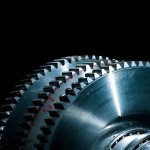How to Limit Equipment Downtime
Manufacturing equipment is at the heart of any production operation. Without these essential tools, production would come to a screeching halt. However, downtime in manufacturing equipment can occur due to a variety of reasons, including mechanical failures, software glitches, and operator errors. This downtime can cause a cascade of issues, including decreased productivity, missed deadlines, and ultimately lost revenue. In this blog post, we will explore ways to limit equipment downtime to ensure smooth operations.
Understanding the Equipment
One of the first steps to prevent equipment downtime is to understand the equipment you’re working with. This means understanding its capabilities, limitations, and maintenance requirements. Properly trained employees can help with this effort by being able to identify when equipment is not functioning correctly.
It’s important to establish a protocol for training new employees on how to use each piece of machinery and ensuring they understand the associated safety measures. Making sure machines are used correctly can extend their lifespan, preventing the need for frequent repairs.
Establish a Routine Maintenance Schedule
A vital step to prevent manufacturing equipment downtime is to establish regular maintenance schedules. This means developing a plan to regularly inspect and service your equipment in order to keep it running smoothly.
To determine how often you should be working on your machines, start by consulting the manufacturer’s guidelines. They should have recommendations for how often various components need to be checked and serviced.
You should also consider your own usage patterns. Machines that are used more frequently may require more frequent maintenance. Additionally, you may need to adjust your schedule based on environmental factors, such as high humidity or extreme temperatures.
Once you have a sense of how often you need to perform maintenance tasks, create a schedule. This should include a list of all the machines that need to be serviced, as well as the frequency of the maintenance tasks. Be sure to build in some flexibility, in case unexpected issues arise.
Having a regular maintenance schedule in place will help you catch potential problems before they turn into major downtime events. It also helps ensure that your machines are always running at peak efficiency, which can help improve overall productivity.
Invest in Predictive Maintenance
Predictive maintenance takes maintenance to the next level by using technology and data analysis to predict equipment failure before it occurs. It’s a proactive approach to maintenance that can save a lot of time and money in the long run.
With predictive maintenance, sensors and other technologies are used to continuously monitor equipment for signs of wear and tear. This data is then analyzed to identify potential issues before they turn into serious problems.
The benefit of predictive maintenance is that it can help companies avoid unplanned downtime by addressing issues before they occur. This means less lost productivity and more reliable equipment performance. To implement predictive maintenance, you’ll need to invest in the necessary technology and expertise to gather and analyze data. This can be a significant upfront investment, but it can ultimately save your business a lot of money in the long run.
Work with the Experts at Air & Hydraulic Equipment
At Air & Hydraulic Equipment, Inc., we’re here to help you with any of your industrial automation needs. We offer custom engineering, programming, fabrication, and machining. Our certified team has the knowledge to service and repair your equipment to keep them running smoothly.
Contact us today to learn more about our services.










